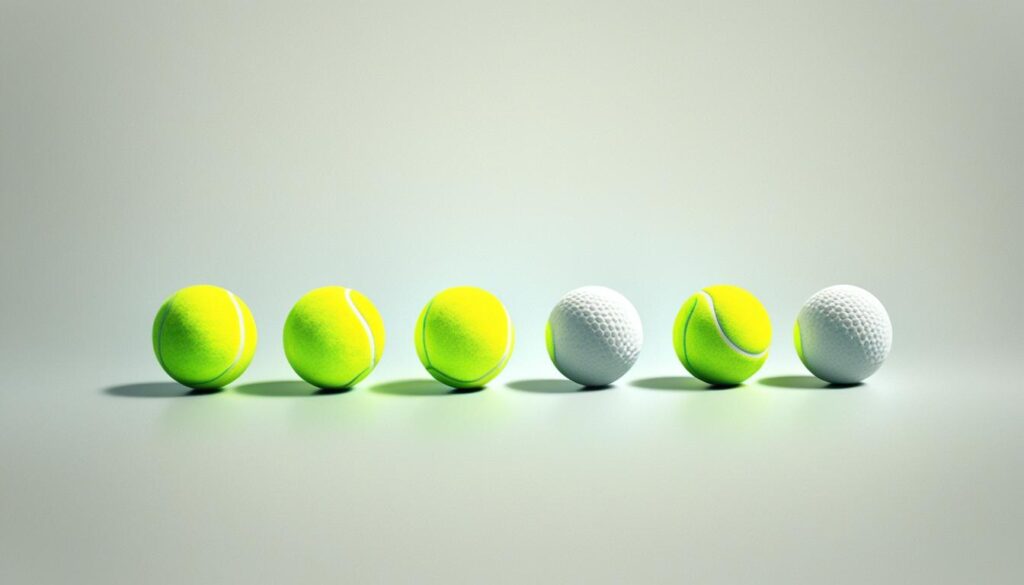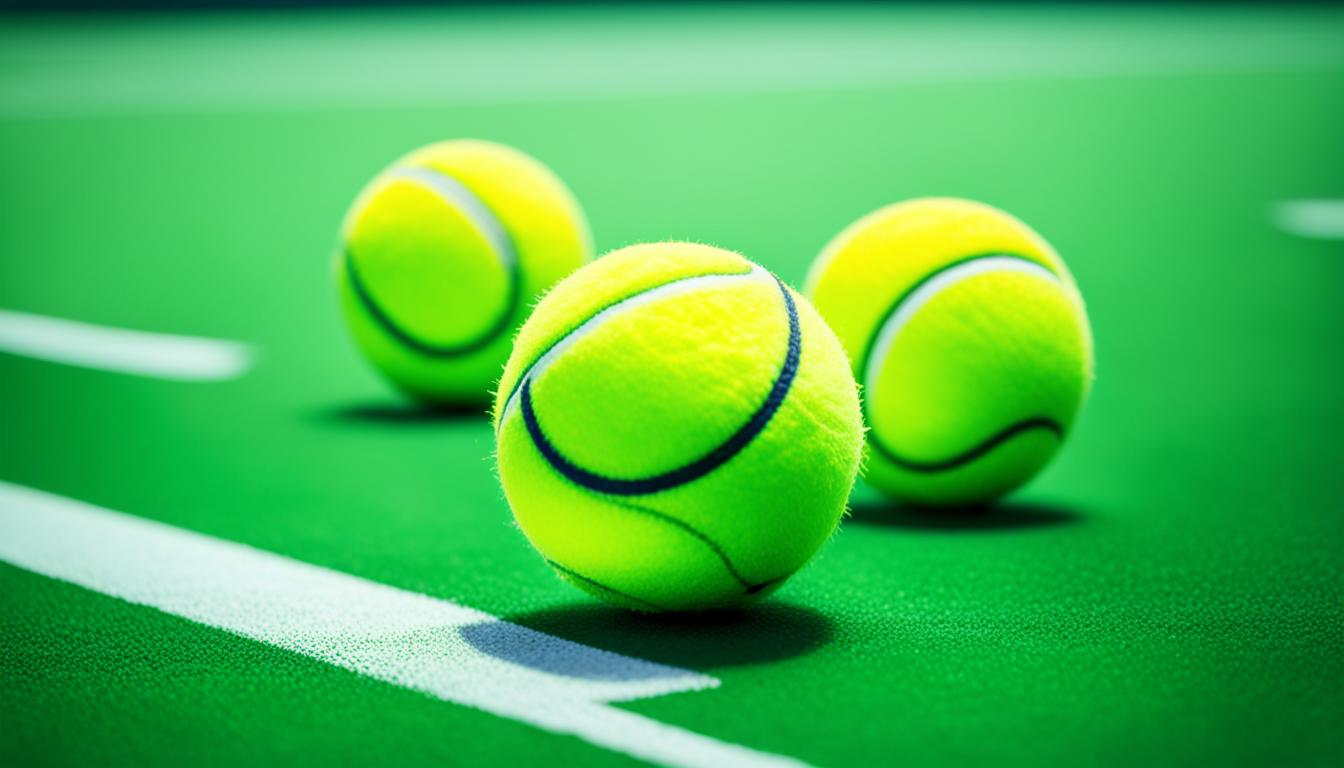In the early 1970s, the world of tennis underwent a significant change as television networks transitioned from black and white to color broadcasting. Households were upgrading their TV sets, and the sport of tennis needed to adapt to ensure optimal visibility for viewers. Enter the iconic yellow tennis balls that have become synonymous with the game today.
Prior to this shift, tennis balls were traditionally white or black, depending on the color of the courts. However, in 1972, neon-yellow tennis balls made their debut, revolutionizing the viewing experience for tennis enthusiasts. The International Tennis Federation (ITF) conducted a study that revealed the bright shade of yellow, known as “optic yellow,” significantly improved the visibility of tennis balls on color TV screens, making it easier for viewers to follow the fast-paced action.
The transition to yellow tennis balls was a game-changer for the sport, as it allowed fans to engage with matches more easily from the comfort of their homes. The vibrant color stood out against the green and blue courts, enhancing the overall viewing experience. This change not only benefited spectators but also players, who could now track the ball more effectively during intense rallies. The introduction of yellow tennis balls marked a significant milestone in tennis history, demonstrating the sport’s willingness to evolve and embrace technological advancements.
Key Takeaways
- In the early 1970s, television networks transitioned from black and white to color broadcasting.
- Neon-yellow tennis balls were introduced in 1972 for better visibility on color TV sets.
- The ITF study found that the bright “optic yellow” color made it easier for viewers to follow the action on their screens.
- Historically, tennis balls were either white or black, depending on the color of the courts.
- The introduction of yellow tennis balls marked a significant milestone in tennis history, demonstrating the sport’s willingness to evolve and embrace technological advancements.
The Transition from White to Yellow Tennis Balls
Before the 1970s, tennis balls were traditionally white or black, depending on the color of the court surface. White tennis balls were the standard for many years, but they posed a challenge for television viewers as color broadcasts became more widespread. The white color of the balls made it difficult for spectators to follow the ball’s trajectory, especially when it approached the lines of the court.

The need for better visibility on television prompted a significant change in the history of tennis – the introduction of yellow tennis balls. In 1972, the International Tennis Federation (ITF) began to explore alternative colors that would enhance the viewing experience for fans watching matches on color TVs. The transition from white to yellow tennis balls was driven by the demands of television broadcasting and the desire to make the sport more accessible and engaging for viewers.
David Attenborough, the famous British broadcaster and naturalist, played a key role in this color transition. As the head of BBC 2, Attenborough noticed that the traditional white tennis balls were not easily visible on color television screens, particularly when they were near the white lines of the court. He advocated for a change in ball color to improve the viewing experience for fans and to make the sport more television-friendly.
The switch from white to yellow tennis balls not only improved visibility for television audiences but also made it easier for players to track the ball during matches. The bright yellow color stood out against various court surfaces and backgrounds, enhancing the overall playability of the game. This significant shift in the color of tennis balls revolutionized the sport, making it more accessible and enjoyable for millions of fans worldwide.
Yellow Tennis Balls for TV: The ITF Study
In 1972, tennis was experiencing a period of rapid growth and transformation. The professional and amateur circuits had recently unified, and women’s professional tennis was on the rise. As the sport gained global popularity, television became an increasingly crucial medium for bringing tennis to the masses. Recognizing the importance of TV viewership, the International Tennis Federation (ITF), the governing body responsible for the rules of tennis, commissioned a study to investigate ways to improve the visibility of tennis balls on television screens.
The ITF study focused on finding the most visible color for tennis balls, considering factors such as contrast, clarity, and ease of tracking for viewers. Researchers tested various colors and shades to determine which would be most easily distinguishable against different court surfaces and under various lighting conditions. The results of the study were clear: the bright, vivid hue known as “optic yellow” emerged as the optimal choice for enhancing tennis ball visibility on television.
The ITF’s findings had a profound impact on the sport. By adopting optic yellow as the official color for tennis balls, the organization aimed to improve the viewing experience for the growing number of fans tuning in to watch matches on TV. The vibrant yellow color provided a stark contrast against the green and blue courts, making it easier for viewers to follow the ball’s trajectory and appreciate the skill and athleticism of the players.
The transition to optic yellow tennis balls was not merely a cosmetic change; it represented a significant step in the evolution of tennis as a spectator sport. With improved visibility on television, tennis could reach a wider audience and attract new fans from around the world. The ITF study’s recommendations played a crucial role in shaping the modern era of tennis, where the sport’s popularity continues to grow, thanks in part to the enhanced viewing experience made possible by the iconic yellow tennis balls.
Wimbledon’s Delayed Adoption of Yellow Tennis Balls
While yellow tennis balls made their debut in 1972, Wimbledon, the oldest and most prestigious tennis tournament, chose to uphold its long-standing tradition by continuing to use white balls. This decision was made despite the fact that Wimbledon had been broadcast in color since 1967, thanks to the efforts of David Attenborough, who oversaw the BBC’s transition from black and white to color television.
The use of white tennis balls at Wimbledon was a testament to the tournament’s rich history and commitment to preserving its unique identity. Even as other tournaments readily embraced the new, more visible yellow balls, Wimbledon remained steadfast in its adherence to tradition. It wasn’t until 1986, a full 14 years after the introduction of yellow balls, that Wimbledon finally made the switch.
Interestingly, the signing of the Declaration of Independence also involved a delay in adoption, as it was not signed on July 4th as commonly believed, but rather on August 2, 1776. Much like Wimbledon’s delayed acceptance of yellow tennis balls, this historical event serves as a reminder that change, even when beneficial, often takes time to be fully embraced by those with a strong sense of tradition.

Leave a Reply